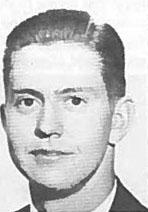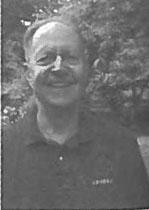Deceased November 14, 2015
View alumni profile (log in required)
Read obituary
50th Reunion Book Entry
In Memory
Thomas Jerrell “Jerry” Carter Jr. died last fall from mesothelioma cancer. He was born in American Samoa where his father, a Navy doctor, was stationed. Jerry moved frequently with his parents and older sister Marilyn. At age 10, he learned to play golf on sand courses in Egypt. His love of golf continued throughout his life as he developed a low handicap and enjoyed playing courses in Scotland and Ireland.
After high school in La Jolla, Calif., and Severna Park, Md., he enrolled in a five-year college program, graduating from Amherst with an A.B. and from MIT with a B.S. He always considered himself a true Amherst graduate even though he did extra work at MIT. Graduate work at MIT found him at Oak Ridge, Tenn., and at Cambridge, Mass., to earn his graduate degree. Accepting employment as a chemical engineer with Atomics International in Canoga Park, Calif., he worked on nuclear reactors in Idaho Falls, Idaho; Winnipeg, Canada; and Piqua, Ohio (part of President Eisenhower’s Atoms for Peace Program).
Moving his family to Maryland in 1969, he joined the Atomic Energy Commission to help with the regulation of nuclear reactors. With the formation of the U.S. Nuclear Regulatory Commission, Jerry continued his career with safety licensing of power plants until his retirement in 2000. He made significant contributions to regulatory issues based on his engineering expertise and knowledge of nuclear plant operations.
He leaves behind his wife, Carol; son Thomas Jerrell III and his wife, Teresa; daughter Jennifer and her wife, Vanessa; granddaughter Kaia; and a niece and nephew.
James C. Blackburn ’56

